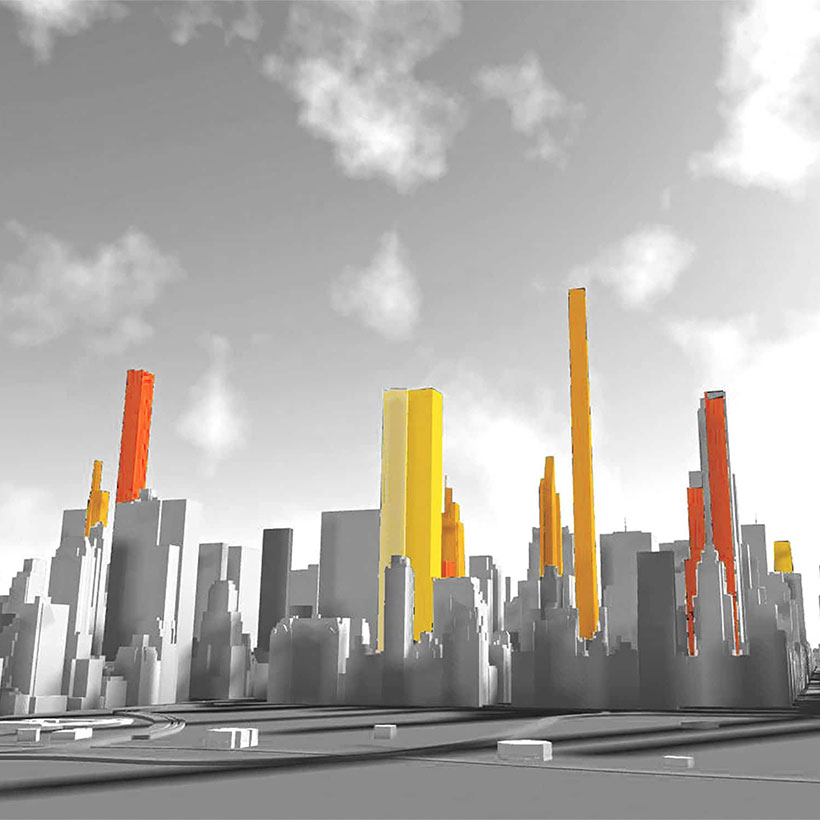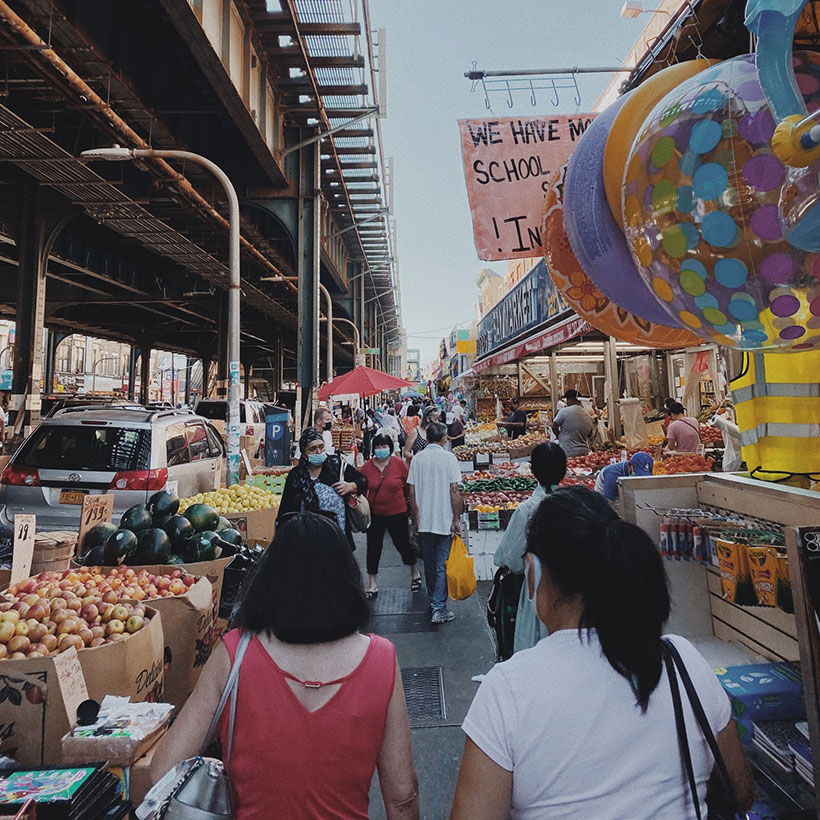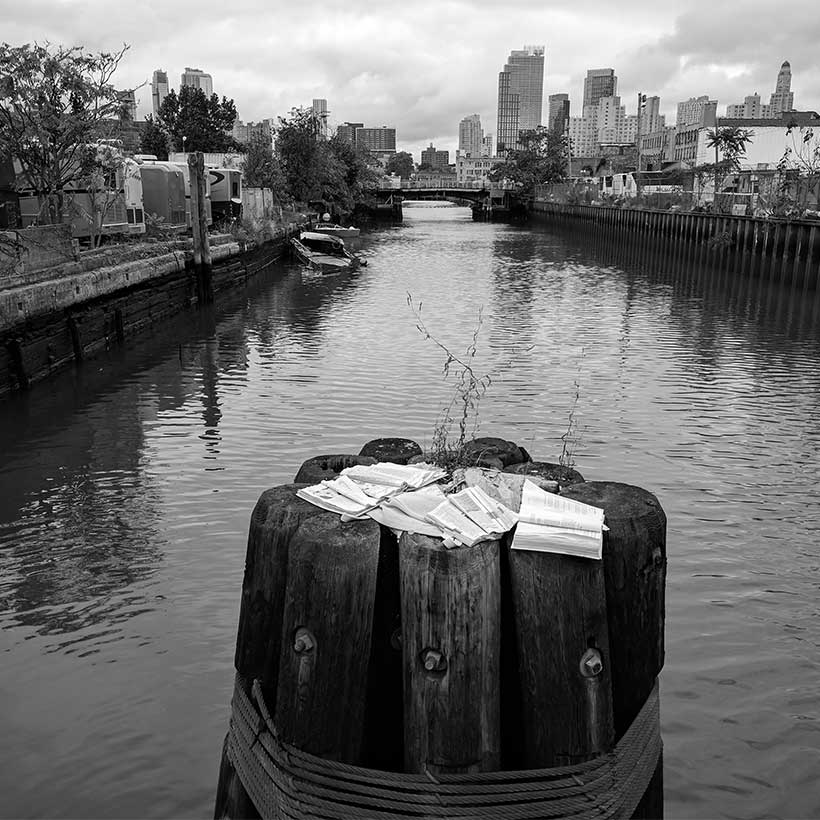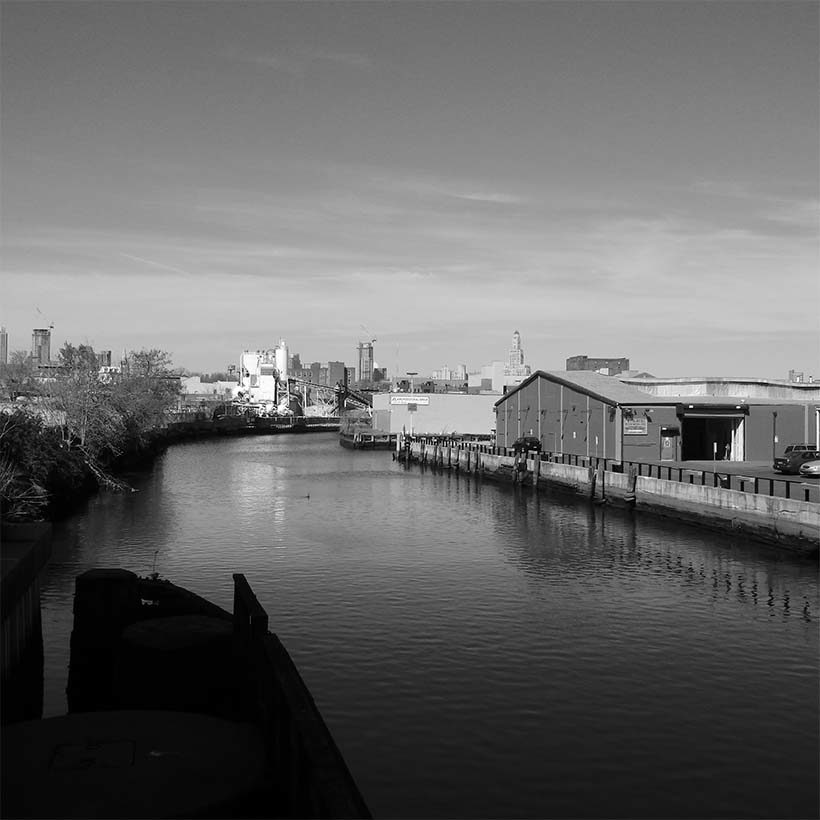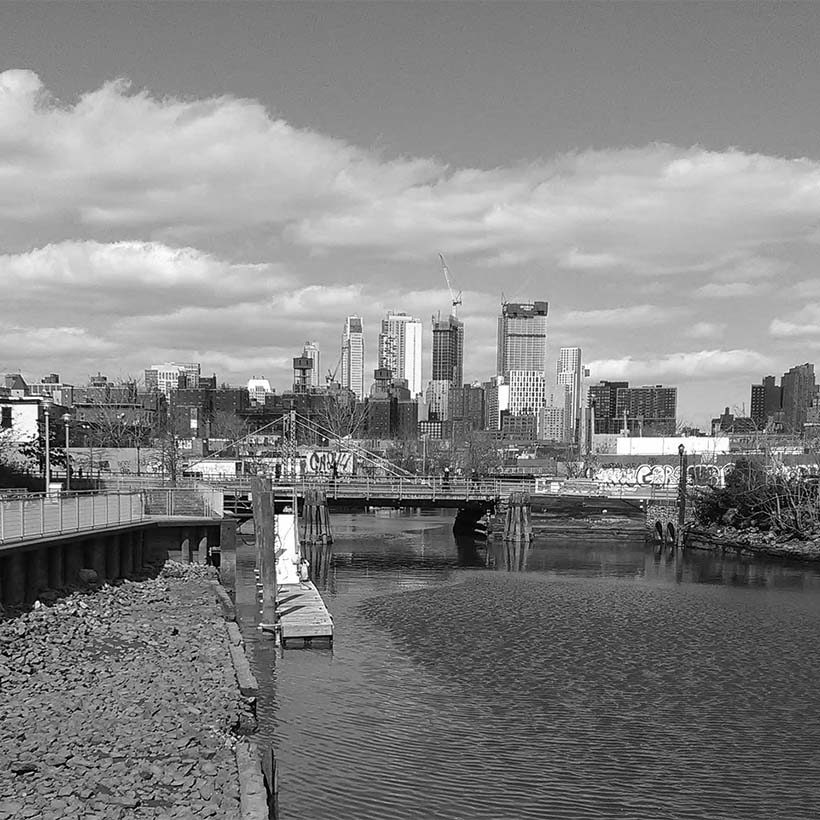Diversity, Character & Infrastructure Concerns Must Be Resolved in Gowanus Rezoning Plan
Comments to New York City Council and City Planning Commission
The Municipal Art Society of New York (MAS) has closely examined every neighborhood rezoning under the de Blasio administration. In 2018, we released a report Tale of Two Rezonings:Taking a Harder Look at CEQR, which exposed the real consequences of off-target development projections. MAS has had a long engagement in Gowanus. In 2007, we launched the Save Brooklyn’s Industrial Heritage website, including sites in Gowanus, and successfully nominated the Brooklyn Industrial Waterfront to the National Trust for Historic Preservation’s 11 Most Endangered Places. The following year, we conducted a historic resource survey of Gowanus and commented extensively on the 2008 Gowanus Canal Corridor Rezoning.
Twelve years have passed since the 2008 rezoning proposal, yet many of the same issues MAS first raised remain with the current Gowanus Neighborhood Plan: inadequate stormwater and sewage infrastructure; public health concerns regarding the Gowanus Creek; climate change adaptation challenges; the loss of industrial space; weak protections for small businesses; and threats to historic resources and the manufacturing character of the neighborhood.
Download Testimony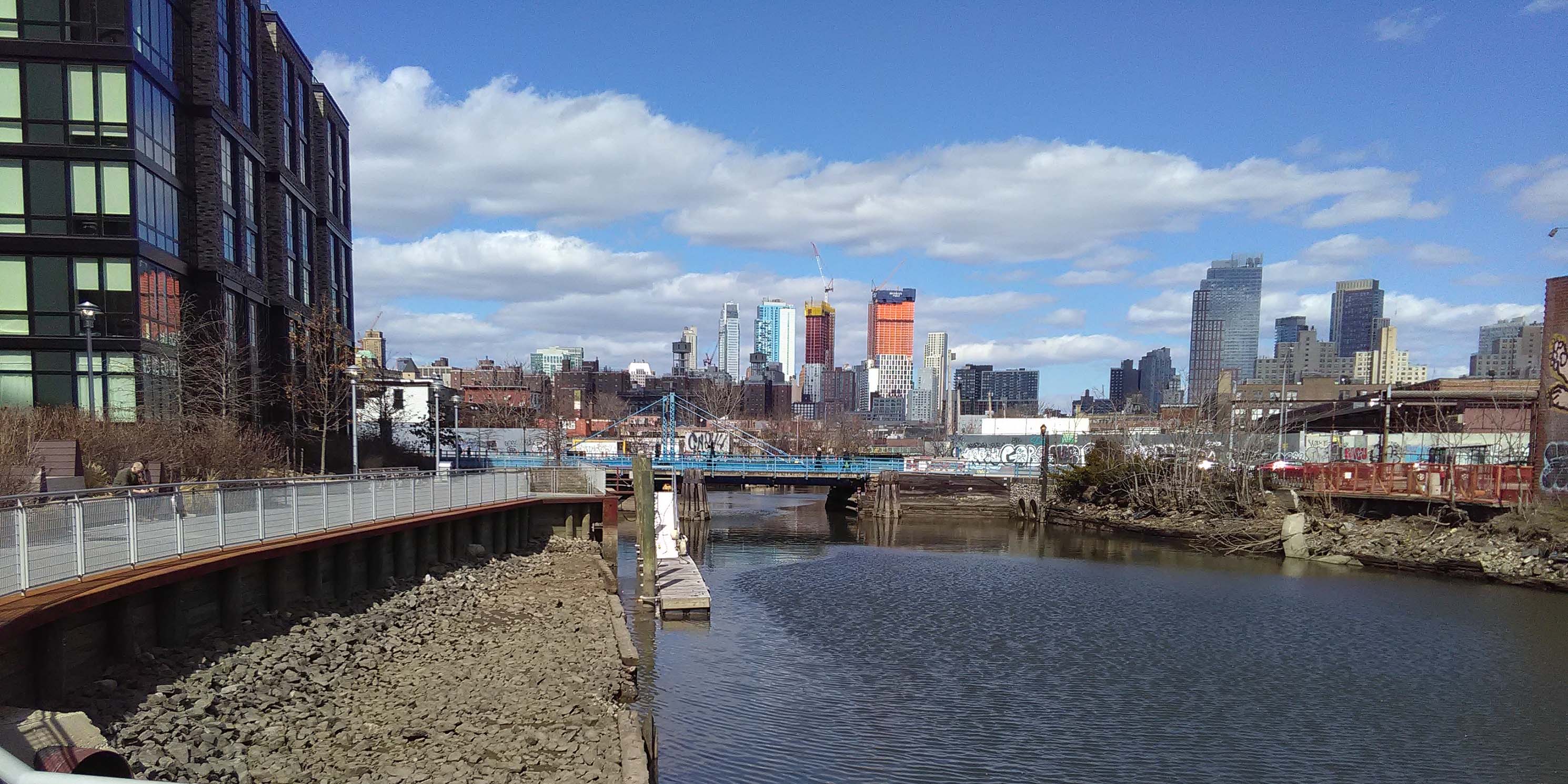
Since the release of the Draft Scope of Work (DSOW), MAS has questioned the accuracy of development projections under the new proposal, as well as housing affordability and choice, infrastructure capacity, the status of the Southwest Brooklyn Industrial Business Zone (IBZ), and whether new development would help pay for repairs at nearby NYCHA developments. Gowanus is a unique and complex neighborhood.
The proposal is the first rezoning by this administration that involves a largely white and middle-class neighborhood with a lower-income core. Although income levels vary greatly at the census tract level, the median household income in the rezoning area is $115,000, almost double that of Brooklyn as a whole.1 As a result, gentrification and displacement risk affect the neighborhood differently than in other rezonings. The majority of the area’s low-income residents are concentrated in three NYCHA complexes (572 Warren Street, Gowanus Houses, and Wyckoff Houses), all of which are just outside the rezoning project area. In addition, unlike other recently rezoned neighborhoods, Gowanus has large swaths zoned for manufacturing. The rezoning area also intersects with the Southwest Brooklyn IBZ, to the south. The area’s only natural asset, the Gowanus Canal, is also one of the nation’s highest profile Superfund sites.
Many aspects of the federal cleanup and subsequent maintenance of the canal remain shrouded in uncertainty as the federal EPA and the City’s DEP disagree on the compliance of newly proposed construction timelines for future DEP filtration facilities. New York’s economic, planning, and development landscape has changed dramatically since the release of the project DSOW in the spring of 2019. The COVID-19 pandemic continues to wreak havoc on the city’s economy and poses an unprecedented public health threat to working families, small businesses, schools, and overall quality of life. The future of the city, let alone the demand for future development, is very much in flux. The experience of COVID-19 should inexorably change how the City approaches land use decisions and future development, particularly with regard to density, housing, open space, the public realm, and community engagement. The Gowanus rezoning should reflect this change.
The City faces a significant public and political challenge with the rezoning. A spate of recent rezonings (Inwood, Bushwick, Southern Boulevard, and Industry City) has been met with strong opposition. These proposals did not gain community trust in the land use decision-making process, particularly around issues of displacement risk, deficient evaluations, and inadequate mitigation plans.
Under these circumstances, it is imperative that the rezoning balances the City’s development goals with the needs of the Gowanus community. The best way to accomplish this is by listening and responding to them. While we support the Department of City Planning’s (DCP) planned pre-ULURP certification public meetings, the efficacy of community input is commensurate with the level of transparency the City offers. Therefore, it is incumbent on the City to disclose all relevant information about the proposal to make the most of these opportunities. This will save time later in the environmental review and public land use processes.
We also urge the City to encapsulate the input gleaned from these meetings in a report issued prior to the release of the DEIS and ULURP certification. That way the City can better demonstrate how the proposal and project environmental review documents reflect new community input. Such an effort should be mandated for all future rezonings.
With these myriad concerns in mind, MAS would support the rezoning if the following improvements are included in the proposal.
Development Projections and CEQR
We question the accuracy of the proposal’s Reasonable Worst Case Development Scenario (RWCDS), the forecasted maximum development, which also frames the overall CEQR analysis. The DSOW identified 73 lots as potential development sites. Under CEQR, projected development sites, those likely to be developed, are evaluated for impact. However, potential developments, are not. Potential development sites are less likely to be developed due to a variety of site conditions, such as size and shape.
This is an important distinction because as we have seen with other neighborhood rezonings, potential development sites and unidentified sites often do get developed due to zoning lot mergers, development right transfers and additional zoning waivers and variances. For example, a total of 53 sites within the Downtown Brooklyn and Long Island City rezoning areas used TDRs to facilitate additional development that was not evaluated in the EISs.2 Due to subsequent zoning bulk waivers, the 2005 Hudson Yards EIS underestimated total floor area development by 1.8 million square feet.3 The first three planned developments in the Greater East Midtown District, rezoned in 2017, are proposed office towers that were not even identified as potential development sites in the project EIS. Therefore, the DEIS should include a full build-out analysis for all 73 potential development sites.
To accurately identify development trends in Gowanus, the DEIS must disclose how much developable land in the project area has been purchased, sold, or transferred in recent years and how these properties factor into the framework for the evaluation. This information would add more reliability to development forecasts and reduce the potential for underestimating the number of projected development sites.
Affordable Housing and Fair Housing
According to the City, the rezoning seeks to increase affordable housing options and promote access for low-income households to live in the neighborhood. Proponents assert that the proposal would ensure racial and economic integration. However, coordination is needed to meaningfully increase affordable housing development, expand housing choice, and dismantle segregation. Fair housing demands holistic action to both increase housing supply and address historic inequities. While there has been much attention to the production of new affordable units in a higher-income, amenity-rich neighborhood, not enough effort has been given to recognize and account for recent demographic shifts and the opportunity to increase housing choice for vulnerable neighbors through this process.
Gowanus has been subject to demographic shifts since 1990. As an indication of gentrification, the area has lost one of its Racially and Ethnically Concentrated Areas of Poverty (R/ECAP), a measure used by HUD that uses census tracts where more than half the population is non-White and 40 percent or more of the population is in poverty. The remaining consistent R/ECAP is the nearby NYCHA complexes. Gowanus has become less affordable since 1990, as defined by the percentages of units that would be affordable to a household making 50 percent of area median income.
Income disparity in Gowanus is pronounced. Household incomes in the census tracts that include the NYCHA housing range from $36,987 to $47,705, while those in the remaining census tracts range from $93,355 to $150,764.4 The rezoning must help narrow the gap between these two populations by ensuring that NYCHA is not the only source of truly affordable housing in the neighborhood for the long-term.
In HPD’s recent plan, Where We Live, the City outlines a number of goals, strategies, and actions to advance equity under the affirmatively further fair housing guidance developed under the Obama Administration. The proposed Gowanus rezoning is listed as a strategic action to advance Housing Goal 2: to facilitate equitable housing development in New York City and the region. Among other neighborhood planning objectives, this proposal is seen as “an opportunity to expand the housing stock, add new affordable housing, and increase neighborhood diversity.” This goal is important but also must be balanced with Goal 6: to make equitable investments to address the neighborhood-based legacy of discrimination, segregation, and concentrated poverty.
We question the relative affordability of Gowanus compared broadly to North Brooklyn and the immediate neighborhoods of Park Slope, Carroll Gardens, and Boerum Hill. While new affordable housing production, especially in high-amenity areas, is an important strategy for advancing fair housing, the city must also address the legacy issues that continue to shape how neighborhoods are changing. This could be expressed by setting the deepest affordability requirements under MIH, as well as prioritizing investments and commitments that not only respond to new challenges brought on by additional growth but address historic inequities.
NYCHA
We agree with Council Member Lander that it would be unacceptable to build new affordable housing while leaving public housing in a dilapidated condition.5 Like many community members, our support for the proposal is contingent on a commitment by the City to fund needed upgrades at the nearby NYCHA complexes prior to ULURP certification. We agree with the recommendation in the Pratt Center for Community Development’s 2019 report Public Action, Public Value that the City should explore the transfer of development rights from NYCHA properties within the rezoning area to generate resources to close the $237 million capital funding gap at these three complexes.
In addition, the complexes must be included in the project area because of their proximity and the likelihood that residents would be directly and indirectly affected by the rezoning. This would ensure that the 4,300 residents, which make up 25 percent of the overall rental population in Gowanus, have a voice in the planning process and that the campuses would be included in CEQR analyses.6 However, we stress that NYCHA properties must not be included as potential or projected development or infill sites.
Gowanus Green
We are encouraged by the disclosed plans for the Gowanus Green development. The proposed housing, public school, and 1.5-acre park would be a good step in addressing many of the area’s critical deficiencies. The range of income levels seem reasonably balanced with development goals of the project. However, we are deeply concerned about introducing these sensitive uses to an area with such a high level of historic contamination. With respect to brownfield cleanup process being undertaken by National Grid, the DEIS public health evaluation must disclose the specific measures that will be put in place to protect users from contamination during construction and through operation. The evaluation must also include details about the risks posed by contaminants based on the new uses of the site, measures for protecting the public from potential pathways to exposure to hazardous materials and vapors, monitoring steps, and ways the public will be informed throughout the cleanup process.
Water and Sewer Infrastructure
The capacity of the area’s stormwater and sewer infrastructure to accommodate more than 18,000 new residents over the next 15 years remains one of the most critical issues with the rezoning. The Superfund clean-up would only improve two of the area’s 10 combined sewer overflow (CSO) sheds that discharge directly into the Gowanus Canal. These conditions will be greatly exacerbated by the new development.
The Unified Storm Water Rule (USWR) recently introduced by the city should improve stormwater management on large development sites (over 20,000 square feet) in the rezoning area. The mandatory installation of detention tanks would allow more stormwater to be captured, detained, and released into the Gowanus Canal at slower rates. However, the USWR fails to address the lack of infrastructural capacity for sewage/wastewater, which are major sources of the ecological degradation caused by CSOs.
Before the rezoning can be advanced, infrastructural capacity for both stormwater and sewage must be increased. The DEIS must include a feasibility study and cost analysis infrastructural improvements necessary to fully abate CSOs in the canal corridor, including creating separate sewer lines to wastewater treatment plants.
Open Space
The COVID-19 pandemic underscores the importance of quality and accessible open space. As we mentioned in our DSOW comments, we urge the City to think holistically about the interconnectedness of the neighborhood’s existing and future open spaces, including pedestrian access. We would like to see the concept of a green network, identified in Bridging Gowanus and the Gowanus Framework goals, incorporated into the proposal. The proposal must also include details on additional connectors across the Gowanus Canal to increase pedestrian and vehicular mobility.
Industrial Space and IBZ
The rezoning proposes the elimination of almost 300,000 square feet of manufacturing and industrial space,7 reducing a significant source of employment for the community. In the wake of the devastating job losses resulting from the COVID-19 pandemic, the City must ensure that area residents have access to quality jobs.
We maintain that the Southwest Brooklyn IBZ must be included in the DEIS land use study area so that potential impacts can be evaluated and mitigated. We also recommend that DCP work with the IBZ to formalize a set of strategies through land use actions to stimulate industrial retention, quality job growth, and investment in physical infrastructure and workforce programs.
Conclusion
The Gowanus Rezoning is one of the most complex and challenging neighborhoods rezonings the City has undertaken. It has the potential to drastically change the character of the neighborhood in many ways. As the City seeks to foster substantial new development and introduce a massive influx of residents, it has the dual responsibility to maintain the area’s demographic and business diversity, preserve historic character, and ensure infrastructure is in place to accommodate growth. We will not support the proposal unless the City adopts these recommendations.
Notes
- The Real Deal, Accessed, December 7, 2020.
- The Municipal Art Society of New York, A Tale of Two Rezonings: Taking a Harder Look at CEQR, 2018
- The Municipal Art Society of New York, The Accidental Skyline: 2017, 2017
- US Census, 2014-2018 ACS 5-year data
- The Real Deal, Accessed November 18, 2020.
- Pratt Center for Community Development, Public Action, Public Value: Investing in a just and equitable Gowanus neighborhood rezoning, p.6, Fall 2019
- According to the Gowanus Neighborhood Rezoning and Related Actions, Environmental Assessment Statement, p.3, the proposal would result in the loss of 289,404 gross square feet of manufacturing and industrial space.

